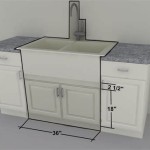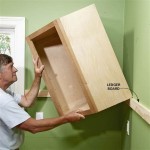Should You Sand Kitchen Cabinets Before Painting
Determining whether or not to sand kitchen cabinets before painting is a crucial decision that impacts the overall outcome of your project. Careful consideration of the essential aspects involved will guide you towards the best approach for your specific situation. This article explores the key factors to weigh when making this decision, providing you with a comprehensive understanding to ensure a successful and satisfying kitchen makeover.
Assessment of the Cabinet's Surface:
The condition and type of the cabinet surface play a significant role in determining the need for sanding. Smooth and well-maintained cabinets may not require extensive sanding, while cabinets with imperfections or visible grain require more preparation. Assess the surface thoroughly to determine the extent of sanding necessary.
Adhesion of the Paint:
Sanding creates a rougher surface, which enhances the adhesion of the paint. On raw wood or laminate surfaces, sanding is highly recommended to provide a good bonding surface for the paint. However, pre-painted or glossy surfaces may not require sanding as the existing finish provides a suitable base.
Achieving a Smooth Finish:
Sanding helps eliminate imperfections and smooth out the surface, resulting in a more professional-looking finish. It removes raised grain, bumps, and other irregularities, ensuring that the paint adheres evenly and creates a smooth, consistent texture.
Removal of Existing Finish:
If you plan to paint over an existing finish that is peeling, chipping, or uneven, sanding is necessary to remove the old finish and create a smooth surface for the new paint. Sanding allows you to remove unwanted layers and prepare the cabinet for a fresh start.
Type of Paint:
The type of paint you intend to use influences the need for sanding. Oil-based paints typically require sanding, while latex paints may adhere well to lightly sanded or unsanded surfaces. Consider the manufacturer's instructions for the specific paint you choose to determine the recommended preparatory steps.
Time and Effort Involved:
Sanding can be a time-consuming and laborious task, especially for large kitchen cabinets. Weigh the time and effort required against the potential benefits of sanding. If the cabinets are in good condition and the paint adheres well, you may opt to skip sanding to save time and energy.
In conclusion, the decision of whether or not to sand kitchen cabinets before painting is multifaceted, involving an assessment of the cabinet's surface, adhesion requirements, desired finish, existing finish, type of paint, and time constraints. By carefully considering these essential aspects, you can make an informed choice that ensures a successful and visually appealing kitchen makeover.

How To Paint Kitchen Cabinets A Step By Guide Confessions Of Serial Do It Yourselfer

How To Paint Kitchen Cabinets A Step By Guide Confessions Of Serial Do It Yourselfer

A Guide To Painting Kitchen Cabinets Norton Abrasives

A Small Sander To Sand Kitchen Cabinets Before Painting House Mix

A Guide To Painting Kitchen Cabinets Norton Abrasives
Refinishing Kitchen Cabinets A Beautiful Mess

Should I Paint My Kitchen Cabinets Helix Painting

How To Clean Prep Wood Kitchen Cabinets Before Painting Do Dodson Designs

How To Paint Kitchen Cabinets A Step By Guide Confessions Of Serial Do It Yourselfer

Refinish Kitchen Cabinets With Kilz Restoration Primer
Related Posts








